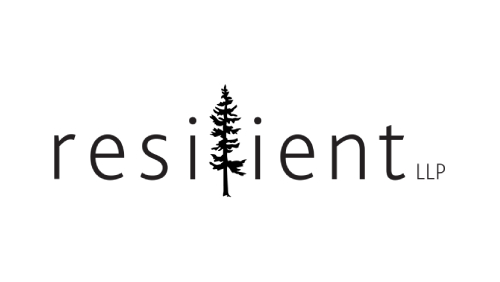Directors Can’t Afford to Ignore Nature:
Canadian Law (and Markets) Won’t
Abstract: Nature-related risks (NRR) are no longer peripheral “ESG” issues—they are foreseeable, financially material exposures that Canadian boards are already legally obliged to consider. With ecosystems delivering trillions in annual value while degrading rapidly, markets and regulators are pricing nature loss into premiums, supply chains, disclosure rules, and investor mandates. Canadian directors’ fiduciary and care duties require them to be informed about NRR, ensure systems to manage them, and disclose material exposures—just like any other enterprise risk—backed by a documented, reasoned process.
Board agendas are crowded—geopolitics, tariffs, cyber risk, AI. Yet one class of risk remains under-addressed in Canadian boardrooms despite its scale: nature-related risk.
Canada’s ecosystems provide an estimated $4.9 trillion in annual services—pollination, water purification, flood regulation, carbon storage, more than twice Canada’s 2018 GDP. At the same time, degradation is accelerating: more than 80% of urban wetlands and roughly 80% of native prairie grasslands have been lost, and one in five species is at risk of extinction. This isn’t a distant environmental concern; it’s a present-day financial and strategic issue.
In 2024, insured losses from extreme weather and natural disasters reached $8.5 billion, a record and nearly triple 2023. Investors are responding in kind: 74% of Canadian retail investors express concern about biodiversity loss; 63% of institutional investors (representing over $4.5 trillion in assets) are integrating nature into decisions; and CPPIB now explicitly includes “nature” in its proxy voting principles. Markets are moving … fast.
Directors’ Duties Already Cover Nature
NRR are not “new” obligations. They fall squarely within existing duties because they are reasonably foreseeable and often capable of being material.
- Fiduciary duty (CBCA s.122(1)(a)): act honestly and in good faith in the best interests of the corporation. Supreme Court decisions (Peoples, BCE) confirm this includes long-term value, environmental considerations, and stakeholder interests (including Indigenous rights holders).
- Duty of care (CBCA s.122(1)(b)): exercise the care, diligence, and skill of a reasonably prudent person. Practically, boards must be informed about NRR, ensure systems exist to identify/manage them, and document a reasoned process. The business judgment rule protects informed decisions—not inaction.
No one is asking directors to elevate nature above every other risk; the law requires balancing. But you cannot balance what you haven’t considered.
The Four Faces of Nature Risk
Nature risk is broader than legacy “environmental risk” because it encompasses both dependencies on nature and impacts to nature that rebound financially:
- Physical: wildfires, droughts, floods impair assets, operations, insurability.
- Transition: policy shifts (e.g., biodiversity frameworks), investor expectations, markets moving away from nature-intensive models.
- Legal: litigation, enforcement, disclosure liability (including greenwashing) and Indigenous rights claims.
- Systemic: cascading ecosystem failures disrupting supply chains and market stability.
Materiality can be acute (e.g., a contamination event) or cumulative (e.g., long-run liability, loss of market share, or insurability). Either way, investors care because cash flows are affected.
Disclosure Isn’t Optional
Existing Canadian securities laws already require disclosure of material risks, which includes material NRR. If a nature-related trend or event could significantly affect market price or value, it is a material fact for continuous disclosure, and—if it changes the business—a material change requiring timely disclosure. Aligning with CSDS 1/2 and the TNFD recommendations helps ensure decision-useful, defensible reporting and reduces greenwashing risk.
A Pragmatic Playbook for Boards
- Educate the board: sector-relevant NRR briefings; external expertise; periodic refreshers.
- Map dependencies & impacts: where the business relies on nature (water, soils, pollinators) and where it affects nature (land use, emissions, biodiversity).
- Assess materiality across horizons: acute vs. chronic; near- vs. long-term; second-order effects (insurance, supplier viability, trade exposure).
- Embed in ERM: define ownership, KPIs, thresholds; use scenario analysis where exposure is significant.
- Engage stakeholders: investors, regulators, suppliers, customers, and Indigenous rights holders; incorporate traditional knowledge where relevant.
- Align and calibrate disclosures: ensure consistency across MD&A, AIF, proxy, and sustainability reports; avoid unsubstantiated claims.
- Document deliberations: minutes and memos should evidence a reasoned, informed process; seek legal advice and privilege where appropriate.
For years, nature risk was pigeonholed as an ESG talking point. That era is over. The financial materiality of nature loss is now visible in insured losses, supply-chain shocks, policy shifts, and investor mandates. Canadian corporate law provides both the mandate and the obligation to act. Consider NRR, decide how they matter to your business, disclose when material, and manage them like any other enterprise risk.
Key Points
- Legal duties apply now: Under CBCA s.122 and Peoples/BCE, boards must consider NRR and exercise prudent oversight; the business judgment rule protects informed, documented decisions—not inaction.
- Four risk channels: physical, transition, legal (incl. Indigenous rights and disclosure liability), and systemic risks.
- Materiality is acute and cumulative: immediate events and longer-term degradation can both be financially material.
- Disclosure expectations are clear: material NRR trigger continuous and timely disclosure; align with CSDS 1/2 and TNFD to reduce greenwashing risk.
- Board playbook: educate, map dependencies/impacts, embed in ERM with owners/KPIs/scenarios, engage stakeholders, and document deliberations.
Sign up for our 2025 Sustainable Finance Summit



